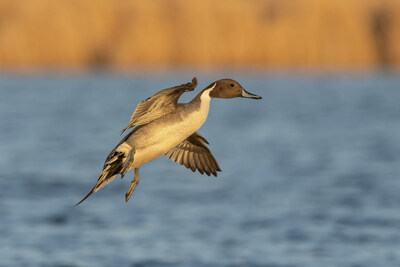
Waterfowl Breeding Population and Habitat Survey registers slight decline from last year
An estimated 32.3 million ducks were observed on the breeding grounds in 2023. According to the Waterfowl Breeding Population and Habitat Survey released today, total populations are seven per cent lower than last year’s estimate and nine per cent lower than the long-term average. Ducks Unlimited Canada (DUC) stresses that the results are an important reminder that the need for habitat conservation never stops.
“As an organization that’s been studying the drivers of waterfowl population dynamics for 85 years, Ducks Unlimited Canada remains vigilant in our efforts to work with our many partners on the landscape and take conservation action,” says Matt Dyson, waterfowl research scientist with DUC.
The Waterfowl Breeding Population and Habitat Survey is run jointly by the United States Fish and Wildlife Service and Environment and Climate Change Canada’s Canadian Wildlife Service, with support provided by other groups like DUC. Using airplanes, helicopters and keen-eyed ground crews, the organizations examine breeding habitat and populations over more than 3.6 million square kilometres of Canada and the northern United States.
Despite this year’s decrease, Dyson says populations of most waterfowl species remain healthy and near long-term averages. Notable in this year’s report are decreases in mallard and American wigeons, which may be attributed to ongoing drought conditions in the Canadian Prairies.
Ongoing pressures from grassland habitat loss, wetland drainage, coastal wetland loss, and climate change impacts continue to affect North America’s ducks. The habitats that ducks need also serve as natural carbon sinks and safe havens for many species at risk. Beyond the benefits they provide to birds, conserving and protecting these landscapes create significant, positive impacts on the overall health of the environment.
For a complete species-by-species breakdown from the 2023 Waterfowl Breeding Population and Habitat Survey, visit our website. Interested hunters, birders and conservationists are also invited to join a free Waterfowl Season Outlook online event on Monday, August 21 for live analysis of the report by DUC waterfowl scientists and other experts.








